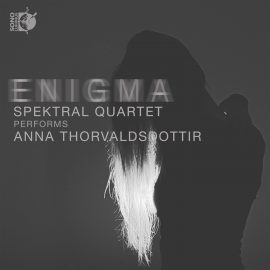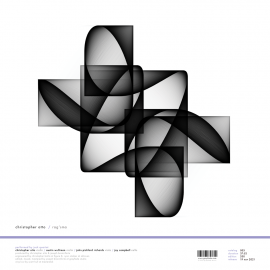The following is the first instalment in a three-part series of articles, originally written by the composer, curator, and founder of the influential Australian experimental ambient label, Room40, Lawrence English in 2011, revised and updated in July of 2020. The guide is divided into three sections, and this one is subtitled “For The Work”. Be sure to check out the Introduction with an updated foreword, One tale of hustling, and then return here for subsequent entries, as well as a follow-up interview with the author discussing his unique view on the subject. This guide will also be available as a downloadable PDF at the conclusion of this feature on Headphone Commute. We hope you will enjoy, and more importantly, apply some of these lessons to help you in your quest!
Let the quality of the work speak (for itself)
Hype is almost never an answer to questions of success, at least not in the longer term. If you’re out for a spike of recognition, sure, hype will do just that. A spike is a mere moment though, and it’s useful to remember life is many, many moments building on one another.
Today’s social media promises the opportunity to create a surge of attention like some wonderful fantasy Edward Bernays may have dreamt in the 1920s. But easy come, easy go – especially in this ever-distracted world where we find ourselves just now. You arrive and depart from the moment with the same gesture: a swipe.
To express yourself fully, you need to find your language. This language will undoubtedly call upon ideas and inspirations of those who have gone before you, but it will ultimately become your own and once you have it, you must become as articulate with that unique language as you can.
No one will ever be able to speak it the way you do and the ideas you can convey with it are distinctly yours. This learning takes time to deepen, and there’s a great satisfaction to be found in that process of deepening. Cutting corners eventually catches up with you, if not publicly then almost certainly it affects your own approaches, processes and potentials when making work.
For something to linger, for art and music to capture minds, to affect bodies and be remembered beyond the moment of its utterance, there needs to be something reflective, consequential and evocative contained in the work you present. Your work needs to create a memory for those who encounter it.
That’s what we’re all striving for to varying degrees, to be remembered and ultimately to have the relevance of our work carry forward and accumulate in future times. The best way to do that is simply to commit yourself to using your language and produce the most engaged and meaningful work you can. It might sound naïve to say such a thing, but the pitfalls of creation are vast and varied.
Less is, likely, so much more
Small talk is cheap, and always getting cheaper. It’s the type of conversation you tend to forget, and quickly. It’s a space-filler more often than not; don’t amplify the small talk, think about what you want to share widely. It’s unnecessary to fill space for the sake of it, that’s just about occupation and no one likes colonisers!
Each project you undertake is important for you as an individual, but its relationship to others may be less tangible. It’s important to think about where a work fits into your life and practice, and equally where it fits within the wider world. What legacy might it hold (for you and others) and how does it lend itself to the overall vision of what it is you seek to do?
Not everything needs to be everywhere, that just makes for a giant hot mess. Some of the most endearing treasures are shared amongst friends and through modest networks. Their reach might shift into something weightier in time, that’s the curiosity of our lives as makers, don’t be afraid to scale in your life.
Timenessless (thanks TT)
Following on from this thought about how our works fit into the world, it’s very important to think about the finite nature of time. As humans, time is our one non-renewable asset. It is therefore utterly precious. When we make a work, and moreover when we seek to share that work, there’s an implicit obligation to the other parties encountering it.
If you invite someone to engage with your work, and this is especially the case for those of us involved in the temporal arts for example sound, non-sculptural installation and film, you are taking away their time and in effect killing them, just a tiny bit. Those minutes you take from them can never be returned. Too dramatic? Perhaps, but the fact remains, the offerings we make to those around us need to propose something that is potentially greater than the moments we take from them.
Our work needs to remain effective for them. It needs to add value, open curiosity and stimulate questions beyond that moment of encounter. If it doesn’t, we are likely nothing more than time robbers, gently nudging our unwitting audiences towards their graves.
For us makers too, while it mightn’t seem so when you’re starting out, time’s value only becomes compounded as you keep on creating. As we move from year to year our lives have a tendency to fill up, our net of engagement grows heavier and as such, time becomes scarcer. It’s important to be attentive to your ways of working and to come to understand how it is time is best used by you. What does time unlock, and what does time lock up? When is enough time and how much is too little?
NB: It’s important to recognise that time expended does not always need to be in the service or delivery of something. I’ll say it, it’s ok to ‘waste’ time. Frankly, one person’s garbage is another person’s paragon. Dumpster diving can reveal all sorts of learnings through happenstance. Don’t be afraid to get your hands dirty during such seemingly pointless pursuits. It can be in these moments where you are most distracted and ‘away’, that the challenges of the work you are frustrated by or uncertain of, can be realised.
The most obvious road is almost always a fool’s road
William S. Burroughs is sorely missed and it’s little gems like this that remind us just how spot-on he was. The middle road, the road of mediocrity, this is not the road to aspire to. Take chances, relish their uncertainty and reach that little bit further than you think you should.
Now, this doesn’t mean burn yourself or the work out. It does, however, mean don’t sell yourself short, don’t give in to the easy and familiar path. There’s nothing more satisfying than the sense you’ve worked, pushed through and achieved something that took more than you thought you were capable of realising. The act of a simple delivery is rarely savoured beyond its completion. We’re often faced with mediocrity, conservative creativity and work that operates at the lower register of interrogation – there’s no need for you or your work to exist here.
Document (at least a little)
To quote The Simpsons (and kids, you can search ‘Krusty Danish’ to find this reference; don’t worry, I know my age is showing by quoting this);
Krusty “What have you done for me lately?”
Bart “I got you that Danish”
Krusty “And I’ll never forget it”
Collective memory is short at the best of times. Let’s face it, there’s so much creation happening daily that it’s easy for people’s memories to become congested. Our memories fade too. Even the sharpest mind gets foggier with time. Do you remember what art you were experiencing this time last year? Or what music was capturing your ears? Possibly not.
So, for all us cultural producers, documentation plays a crucial role in helping jog the memory! It’s both personal and public – sometimes returning to documentation a couple of years on can be a real learning. What worked, what didn’t and why?
Documentation also helps build a portfolio that’s essential when we’re attempting to attract opportunities for new work and new partners. There’s nothing more useful than being able to give considered examples of what it is you do and hopefully, have those examples reflect the quality to which you do them. Respect the work, it’s worthy of that.
Download a PDF version of this guide from Bandcamp.









